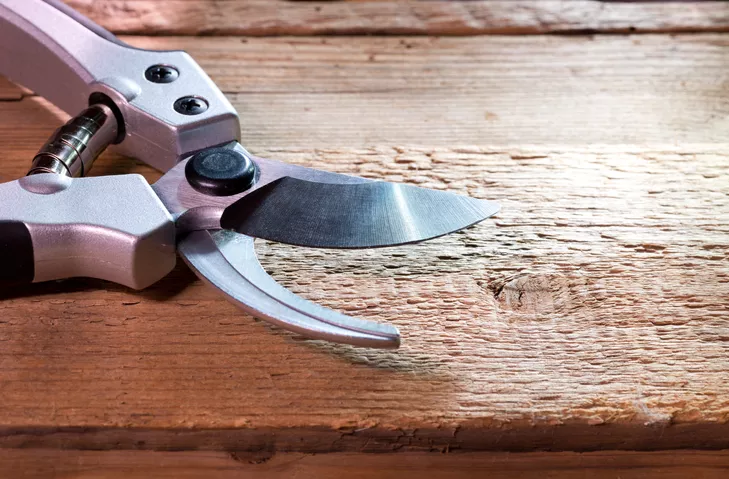Like all palms, Kentia palms are not pruned. Cutting the top would remove the vegetation point, preventing the palm from growing further and even dying. You may only cut brown, dried up or diseased leaves.
 When cutting the Kentia palm, make sure you use a sharp cutting tool
When cutting the Kentia palm, make sure you use a sharp cutting tool
Never cut Kentia palms at the top
The Kentia palm grows quite slowly, so it takes a while to reach a certain height. That's a good thing, because you should never cut the top of a Kentia palm if you want to continue enjoying the palm.
Only the fronds are cut and the roots when repotting:
- Cut brown leaves
- Cut off the brown tips of the leaves
- remove dry fronds
- trim diseased fronds
- pruning roots
If you want to cut whole fronds, it's better to wait until fall. Then the palm recovers over the winter.
How to properly prune a Kentia palm
If the tips of the leaves are brown, simply cut them off. However, the cut must not go into the healthy foliage, as the leaves will later dry out in these areas.
Discolored fronds are only cut when they are completely dry. You should only remove infested fronds beforehand if there are many pests on the palm tree. Cut them off right at the stem, leaving a 3-4 centimeter stub. It frays and later gives the Kentia palm its typical appearance.
Always use sharp tools to cut the fronds. Blunt blades tear at the interfaces and thus provide a breeding ground for bacteria, germs and fungi. Thoroughly clean the cutters before use to avoid spreading pests or diseases to the Kentia palm.
Prune roots when repotting
If you want to slow down the growth of your Kentia palm, you can trim the roots when you repot the palm. Just cut off a few side roots. Be careful not to damage the long taproots. If these are damaged, the Kentia palm can die.
tips
Kentia palms also do well in hydroponics. However, you should only use plants that have been cultivated in water from the start. Later, the palm trees are difficult to get used to.